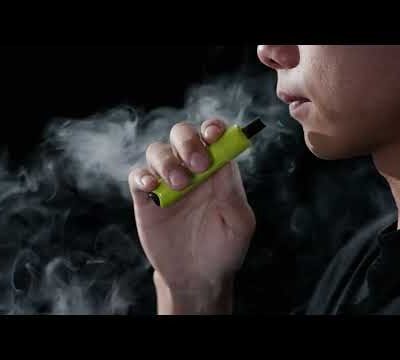Screen printing clothing has become a cornerstone of the custom apparel industry. From branded uniforms to fashion-forward merchandise, this technique has stood the test of time. In 2025, screen printing remains one of the most trusted methods for producing vibrant, durable designs on garments.
This article offers a comprehensive look at screen printing, including how it works, its advantages, current trends, and tips for getting the best results. Whether you’re a fashion startup, a local business, or simply curious, we’ve got you covered.
What Is Screen Printing?
Screen printing clothing—also known as silk screening—is a printing technique where ink is pushed through a mesh stencil (screen) onto fabric, creating a layered and vivid design. It originated in ancient China and was later industrialized in the 20th century for mass textile printing.
The process involves:
-
Creating a stencil or screen
-
Applying ink to the screen
-
Using a squeegee to transfer ink through the stencil onto the fabric
-
Curing (drying and setting) the ink using heat
This method is best known for producing rich, opaque, and long-lasting prints, especially on cotton and cotton-blend fabrics.
Why Choose Screen Printing for Clothing?
Screen printing continues to be a preferred choice due to its cost-efficiency, color vibrancy, and print durability. Below are its core advantages:
1. Durability
Screen-printed clothing is known to withstand repeated washing without fading, cracking, or peeling—making it ideal for uniforms, sportswear, and everyday fashion.
2. Vibrant Colors
Since the ink is applied in thick layers, it produces bold and brilliant colors, even on dark fabrics. Unlike digital printing, screen printing doesn’t rely on CMYK only—it allows for custom mixed inks, including fluorescents and metallics.
3. Cost-Effective in Bulk
The setup cost is higher than digital printing, but the per-unit cost drops significantly for larger orders. This makes screen printing a go-to for bulk apparel production.
4. Versatility
Screen printing is highly versatile, suitable for T-shirts, hoodies, tote bags, uniforms, and more. It also allows for specialty inks like puff, glow-in-the-dark, and shimmer.
2025 Trends in Screen Printed Apparel
As technology and fashion evolve, so does screen printing. Here are the key screen printing trends shaping 2025:
✔️ Sustainable Inks and Materials
Eco-conscious consumers are driving demand for water-based and soy-based inks that reduce environmental impact. More print shops are also shifting to organic cotton garments.
✔️ Retro and Vintage Designs
Nostalgic designs inspired by the ‘90s and early 2000s are booming. Think faded prints, distressed effects, and old-school logos—all easily achievable with screen printing techniques.
✔️ Minimalist and Statement Prints
Clean typography, simple icons, and bold slogans are in fashion, often printed on neutral-toned garments for a sleek, modern look.
✔️ Customization for Microbrands
Small clothing brands are using screen printing to create limited-edition drops and custom collections, offering uniqueness at an affordable price.
Screen Printing vs. Other Methods
| Feature | Screen Printing | DTG (Direct-to-Garment) | Heat Transfer |
|---|---|---|---|
| Best for | Bulk orders | Small batches, complex designs | One-offs, promo items |
| Color Vibrancy | High | Moderate | Moderate |
| Durability | High | Low to medium | Medium |
| Setup Time | High | Low | Low |
| Eco-friendliness | Depends on ink | High (water-based) | Moderate |
Screen printing shines when consistency, durability, and color pop are essential. While DTG and heat transfer have their own use cases, screen printing remains the gold standard for professional-grade apparel.
How to Choose a Quality Screen Printing Provider
Whether you’re tshirt screen printing 10 shirts or 10,000, choosing the right provider matters. Here’s what to look for:
✅ Experience and Portfolio
Ask to see previous work. A reputable shop should have a portfolio showcasing different designs and fabrics.
✅ Ink and Material Quality
Inquire about ink types and garment brands. Eco-friendly inks and high-quality fabrics contribute to both aesthetics and longevity.
✅ Turnaround Time
Ensure the shop can meet your deadline without compromising on quality. Screen printing involves setup, curing, and drying—so time matters.
✅ Customization and Flexibility
Look for shops offering custom PMS color matching, specialty inks, and artwork services.
FAQs About Screen Printing Clothing
Q: Can I print photographs using screen printing?
A: Not ideally. Screen printing is better for solid colors and vector art. Photographs require complex color gradients, which are better suited for DTG or sublimation printing.
Q: Is screen printing eco-friendly?
A: It can be. Many modern print shops now use water-based inks, recyclable frames, and organic materials, but always confirm their sustainability practices.
Q: How long does screen-printed clothing last?
A: With proper care (washing inside out, avoiding high heat), screen-printed garments can last for 50+ washes without noticeable fading.
SEO Tips for Selling Screen-Printed Apparel in 2025
If you’re planning to sell screen-printed clothing online, here are a few SEO and marketing tips:
-
Use descriptive product titles (e.g., “Men’s Organic Cotton T-shirt with Screen Printed Logo”)
-
Optimize your images with alt tags
-
Write informative product descriptions detailing materials, print methods, and fit
-
Include FAQ sections on product pages
-
Leverage Google Shopping, Instagram, and TikTok for showcasing behind-the-scenes videos of the printing process





